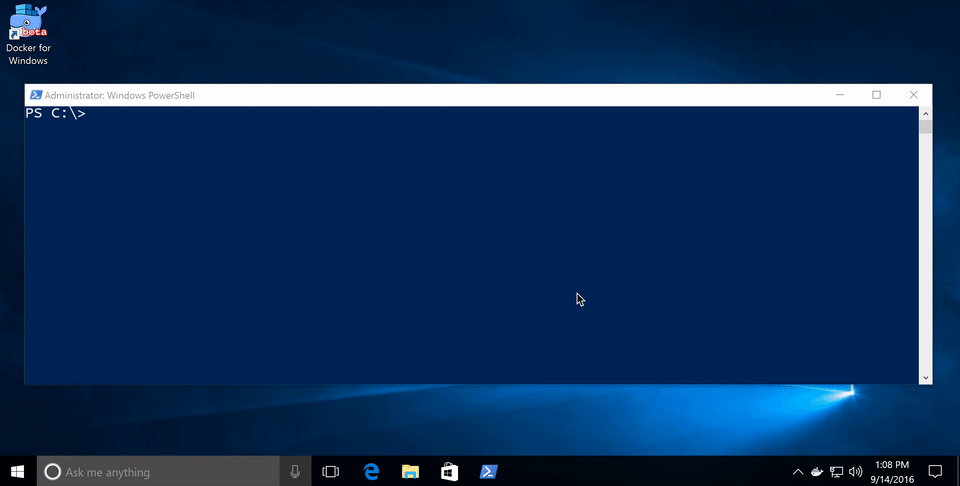

- #DOCKER FOR MAC AND WINDOWS UPGRADE#
- #DOCKER FOR MAC AND WINDOWS SOFTWARE#
- #DOCKER FOR MAC AND WINDOWS DOWNLOAD#
Docker registries also allow the creation of notifications based on events. Docker Hub is the default registry where Docker looks for images. Two main public registries are Docker Hub and Docker Cloud.
#DOCKER FOR MAC AND WINDOWS DOWNLOAD#
Docker clients connect to registries to download ("pull") images for use or upload ("push") images that they have built.

Software: The Docker daemon, called dockerd, is a persistent process that manages Docker containers and handles container objects.
#DOCKER FOR MAC AND WINDOWS SOFTWARE#
The Docker software as a service offering consists of three components: Docker containers are standard processes, so it is possible to use kernel features to monitor their execution - including for example the use of tools like strace to observe and intercede with system calls. ĭocker implements a high-level API to provide lightweight containers that run processes in isolation. Since version 0.9, Docker includes its own component (called " libcontainer") to use virtualization facilities provided directly by the Linux kernel, in addition to using abstracted virtualization interfaces via libvirt, LXC and systemd-nspawn. The Linux kernel's support for namespaces mostly isolates an application's view of the operating environment, including process trees, network, user IDs and mounted file systems, while the kernel's cgroups provide resource limiting for memory and CPU. A 2018 analysis found that a typical Docker use case involves running eight containers per host, and that a quarter of analyzed organizations run 18 or more per host. īecause Docker containers are lightweight, a single server or virtual machine can run several containers simultaneously. Docker on macOS uses a Linux virtual machine to run the containers. When running on Linux, Docker uses the resource isolation features of the Linux kernel (such as cgroups and kernel namespaces) and a union-capable file system (such as OverlayFS) to allow containers to run within a single Linux instance, avoiding the overhead of starting and maintaining virtual machines. This enables the application to run in a variety of locations, such as on-premises, in a public cloud, and/or in a private cloud. ĭocker can package an application and its dependencies in a virtual container that can run on any Linux, Windows, or macOS computer.
#DOCKER FOR MAC AND WINDOWS UPGRADE#
However, you can upgrade the image’s OS before it is available in the GitLab repositories.Docker can use different interfaces to access virtualization features of the Linux kernel. Source for possible build instructions for both Ubuntu and Alpine images.Īs of, the GitLab Runner Docker image based on Alpine uses Alpine 3.12.0. (~160/350 MB Ubuntu vs ~45/130 MB Alpine compressed/decompressed).

Make sure the GitLab CI server certificate is trusted by the GitLab RunnerĬontainer for them to be able to talk to each other. If your GitLab CI server is using self-signed SSL certificates then you should Installing trusted SSL server certificates You may find more information about handling container logs at the Docker documentation Where gitlab-runner is the name of the container, set with -name gitlab-runner by


 0 kommentar(er)
0 kommentar(er)
